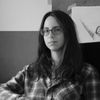In a community arts center just outside Philadelphia, tucked away on a verdant, winding road in the town of Wallingford, there is a great show. In The Clouds features the work of 11 artists who use cloud formations as subject matter, mostly in a literal, depictive way. As easy as it would be for a summer group cloud show to come off as light, relationships between several of the 2-dimensional artists compel deeper looking.
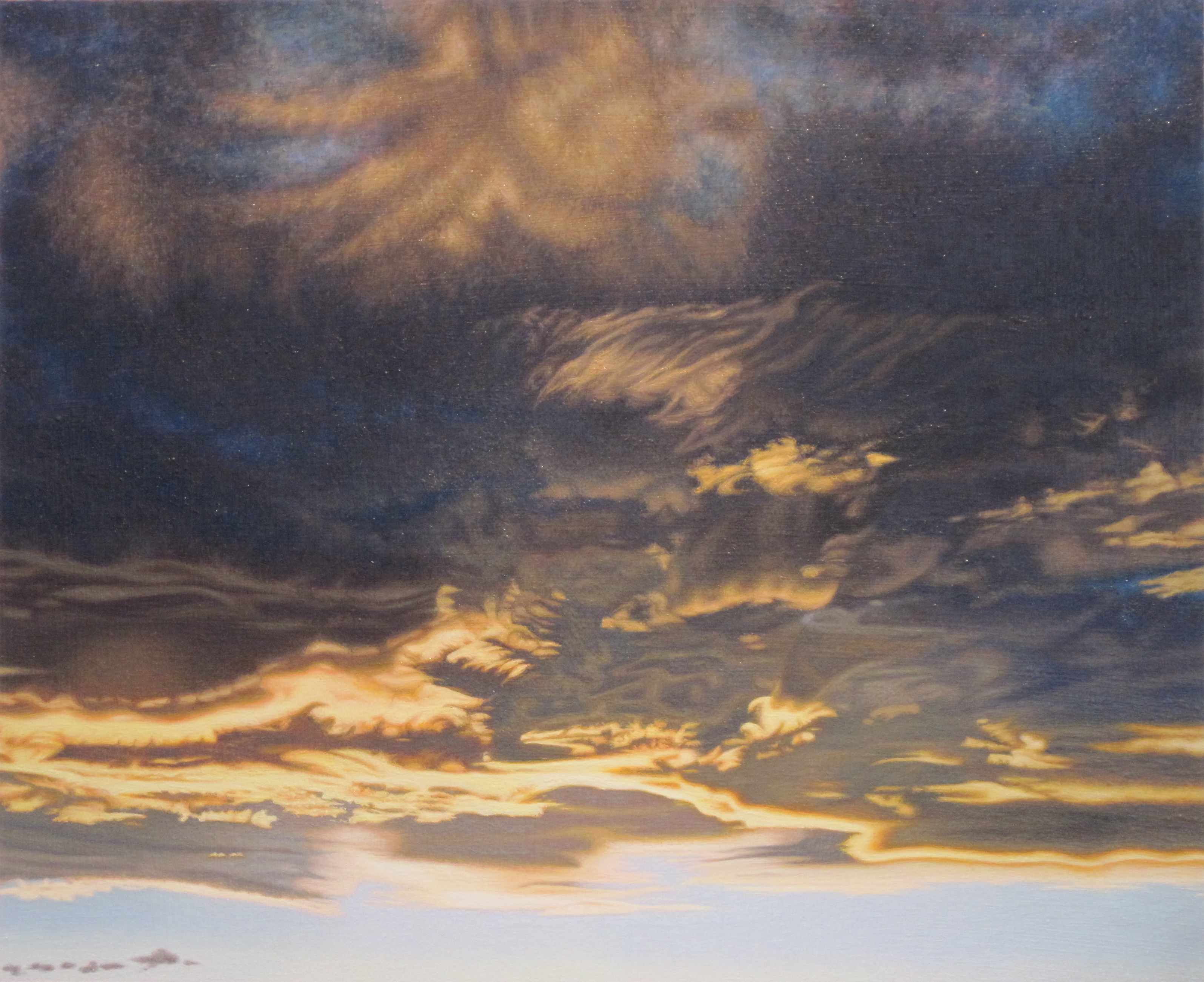
Kathe Grinstead, NZ 4/13/09, oil on paper
When I first approached Kathe Grinstead's paintings, I had an immediate, strange impulse to flip them upside down. Her landscapes can mostly be divided into two sections: an upper cloud-filled area, and a pale strip lining the bottom edge. The clouds recall terrestrial formations--lava pits or mountain ranges seen from above. Their sheer visual weight, hovering at the top of the painting, confuses the eye, which is accustomed to seeing substantive matter oriented below thin air. The pale band of empty sky can alternatively be read as a ground plain speckled with dark rocks or islands. The layered ambiguity of the paintings introduces two recurring themes in the show: an interchangeability between sky and land, and a perspective on clouds as place.
Photographer Joe Painter echoes Grinstead in A Perfect Garden, framing a giant cloud as if it were a rocky monument rising up out of the horizon. At the bottom of the picture, a minimal suggestion of actual ground pushes the illusion, hardly asserting itself over the cloud as "true" land. Overall the show draws strong connections, both thematically and visually, between painting and photography. David Freese's black and white photographs of the Alaskan landscape range from crisp and literal to ethereal, and several works have the painterly sensibility of ink wash or monotype. (Interestingly, I learned at the opening that Joe Painter especially enjoys exhibiting his work with paintings.)
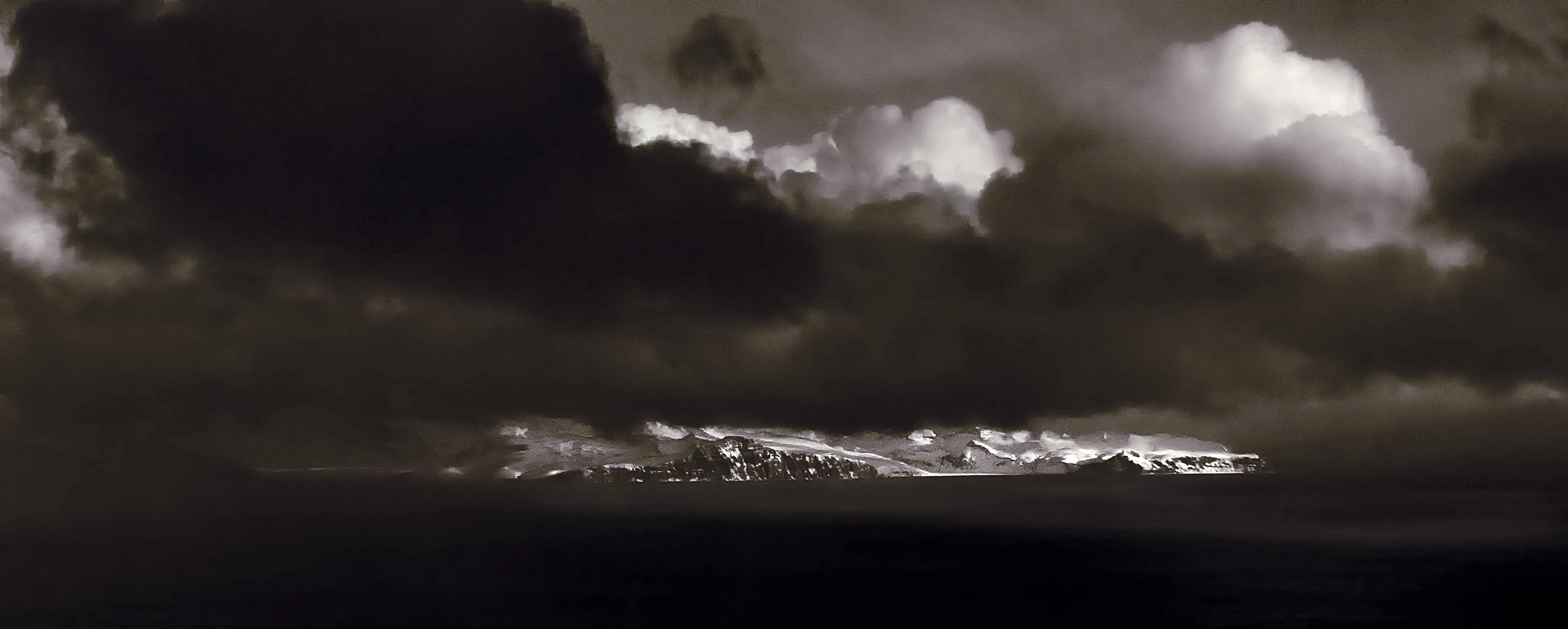
David Freese, Akutan, Alaska, archival print of digital photograph
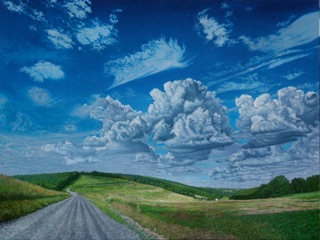
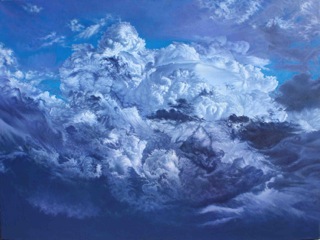
left: Vincent Hron, Hill Clouds, oil on canvas
right: Vincent Hron, Cloud Mountain, oil on canvas
Examining how Kathe Grinstead and fellow painter Vincent Hron technically achieved such convincing illusions of cloud formations, both enmeshing hard-edged, palpable bits into washy swathes of atmosphere, I was reminded of clouds' essential nature: their simultaneous form and formlessness. Throughout the show, artists push their medium to express the tension between something-ness and intangible vapor. Perhaps it is this unearthly duality that inspires people universally to connect clouds with a spiritual realm, as Joe Painter overtly likens his monumental cloud to Eden in A Perfect Garden.
In Vincent Hron's landscapes, the clouds are so breathtaking, so full of exaggerated drama, it's hard not to see them as a reference to the other-worldly. In Patronus and Hill Clouds, Hron includes depictions of the land below the horizon. This portion is small compared to the scale of the sky, but every pebble and leaf is painted with incredible detail. The relative size of the land reaffirms the world "above" as overpowering, but its careful rendering implies a reverence for the Earthly, human world. Or, spiritual associations aside, Hron is simply presenting a world-view that values each humble blade of grass as much as the majesty of clouds.
In The Clouds is up through June 21, 2013, at the Community Arts Center in the Duke Gallery, at 414 Plush Mill Road, Wallingford, PA 19086.
